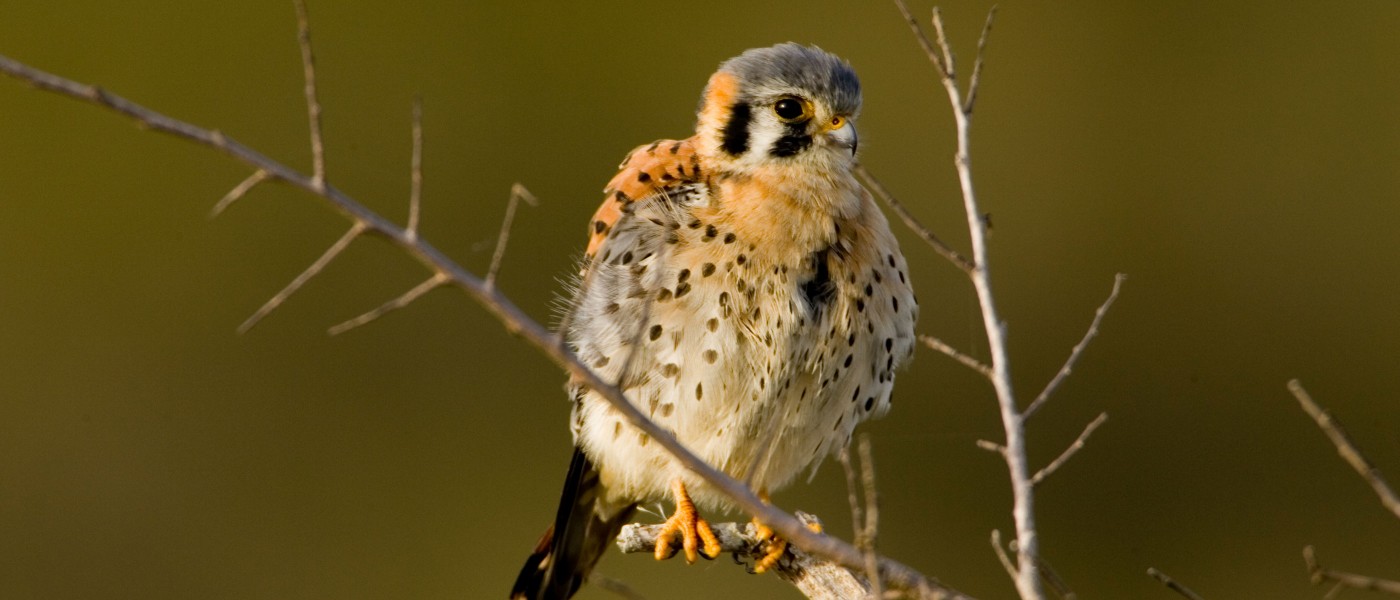Birds of Brooklyn: American Kestrel
Many years ago, I was asked by an elementary school group for my opinion of the American kestrel as a school mascot. I told them that the kestrel had a lot going for it as the symbol of their school teams. It’s a fast flyer. It has a powerful bill used for killing prey. It’s also a very attractive bird, especially the male, with its slate-blue wings and black-spotted underparts. The kestrel would also be a local bird for this New York City school—more than 70 pairs nest in the city. As cavity nesters, they like holes in roof eaves and cornices of old buildings.
The kestrel is a small falcon—the smallest species in the United States—and the most common. It is about the size of a pigeon. Like all falcons, it has long, pointed wings, flies fast, and grabs prey with its beak. Hawks, on the other hand, have broad wings and grab their prey with their talons. Grasshoppers are the kestrel’s favorite food, and the birds can sometimes be seen hovering in place over grasslands in search of these insects. Kestrels also eat cockroaches and mice, making it a very beneficial bird to humans. When smaller prey is not available, kestrels will also hunt sparrows, hence its old name “sparrow hawk.”
The kestrel also migrates through the NYC area from mid-September through November. One of the best spots in Brooklyn to see a kestrel is Floyd Bennett Field. This former airfield has plenty of grasslands loaded with grasshoppers, a perfect spot. If the winter is mild enough and the food supply is stable, it is possible for the kestrel to overwinter here in our borough. During the Christmas bird count in Brooklyn, held in mid-December, the kestrel is almost always recorded in small numbers.
So I told my elementary school group that they had made an excellent selection by choosing the kestrel. It has speed, beauty, and hunting skills—what more could you want in a mascot?
The Birds of Brooklyn series looks at some of the most familiar and fascinating birds that call Kings County their habitat.


